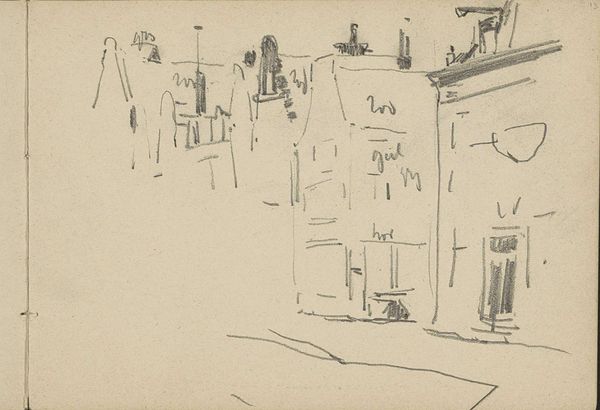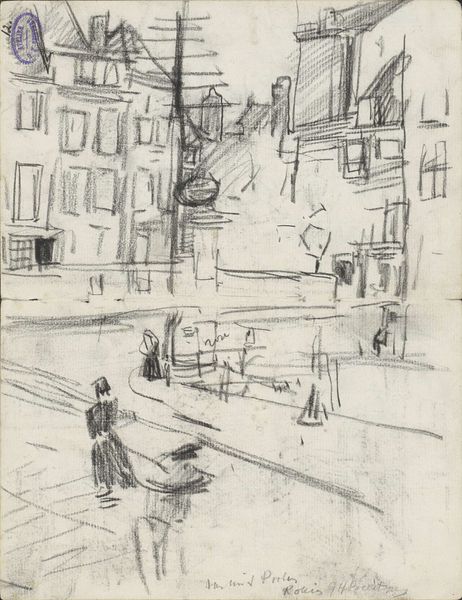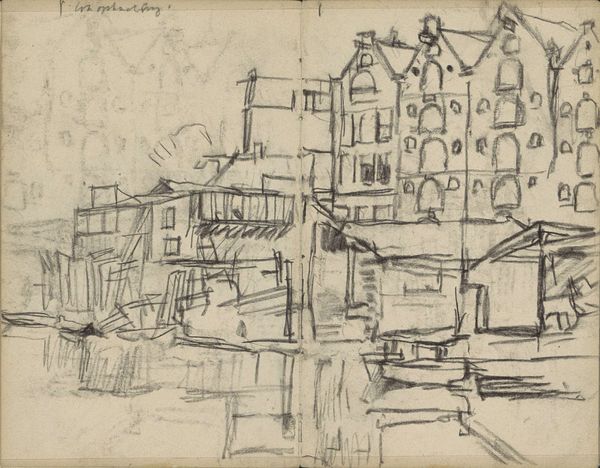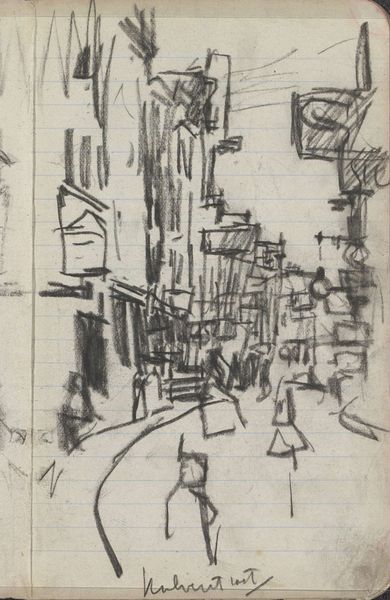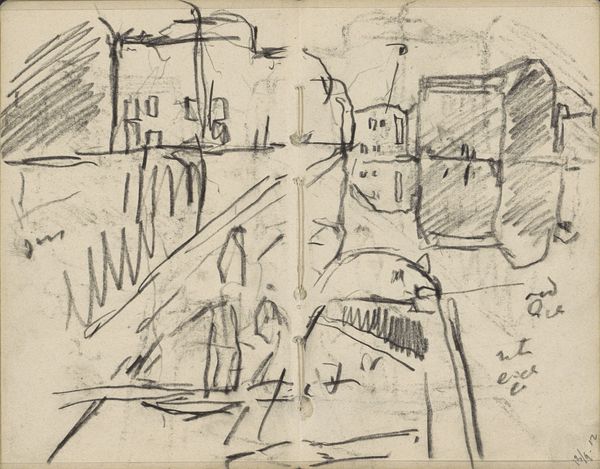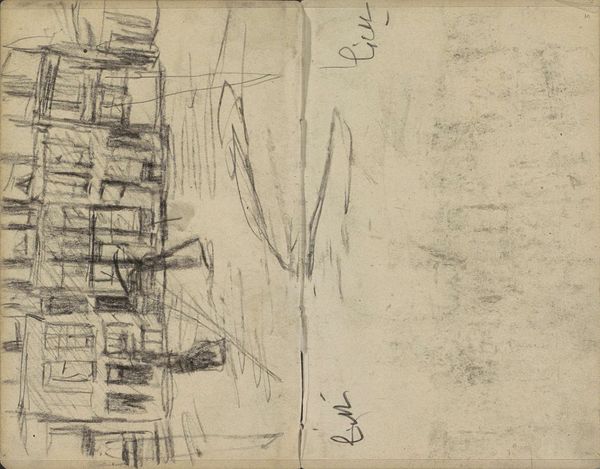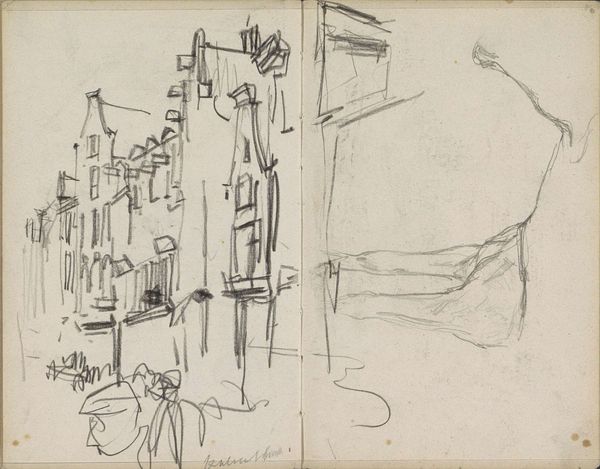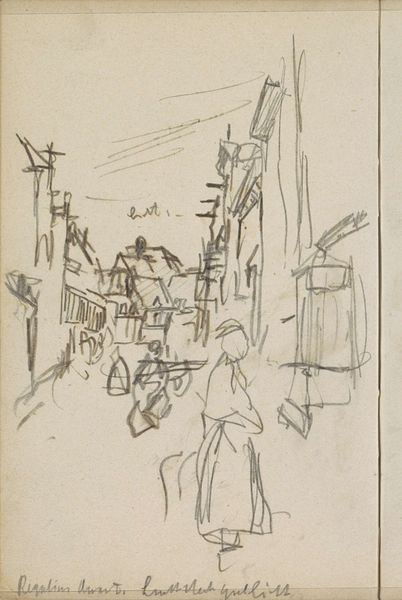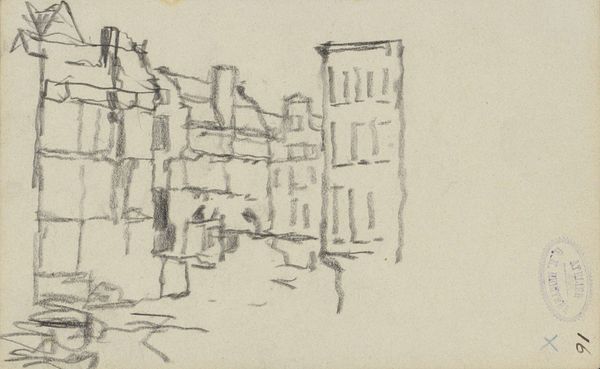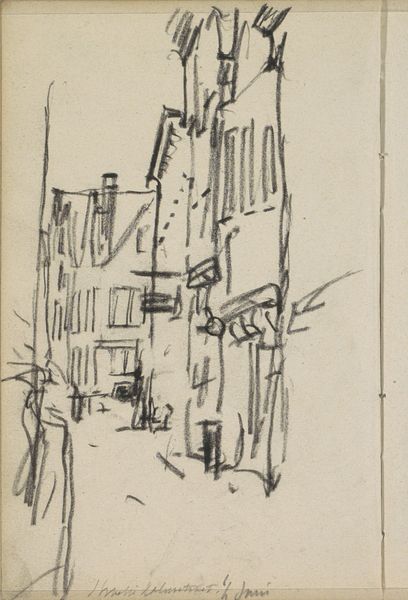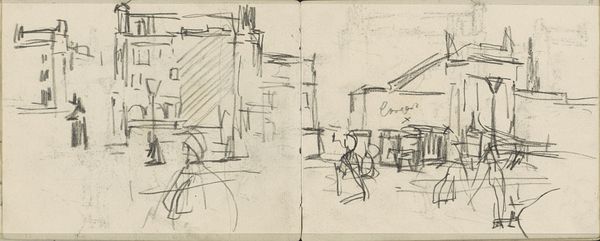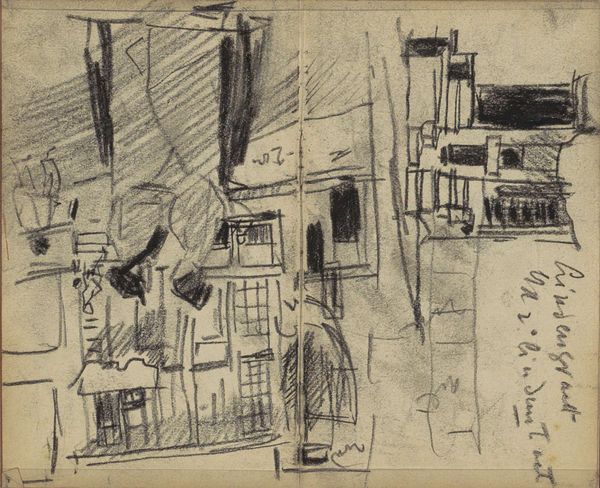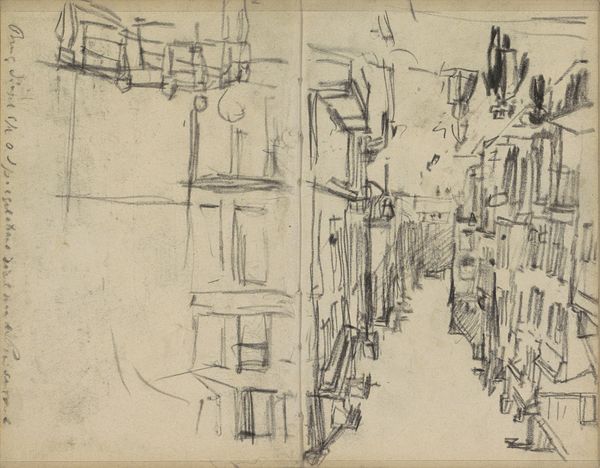
Copyright: Rijks Museum: Open Domain
Curator: Breitner's "Gezicht in Amsterdam, mogelijk de Dam," dating from around 1893 to 1903, captures a street scene with charcoal and pencil. It resides here at the Rijksmuseum. What's your immediate reaction? Editor: Raw. Immediate. It feels less like a finished work and more like a fleeting impression captured on paper, almost as if he quickly sketched this on location to capture the light. I appreciate its utilitarian aspect, as well as its sketch-like aesthetic. Curator: The lack of pretense certainly enhances the image. Look at how he renders the architecture: The buildings loom with dark, almost menacing lines. Are they oppressive, do you think? Does this choice reflect some sort of commentary, beyond merely recording a place? Editor: I see what you mean by oppressive, but to me it reflects the industrialized conditions of the era: hastily made constructions out of low quality, cheap, and easily replaceable materials. The carriage even seems to mimic the industrial forms of machinery—nothing particularly human-scaled in view. Curator: An interesting reading of the time reflected through the pen strokes themselves! And those carriages are prevalent throughout Breitner’s work; there is something very resonant there—as if they function as placeholders, symbols of motion and social status intertwined with the very urban fabric itself. Almost as if society itself is riding off somewhere? Editor: Yes! I think your analysis of social standing rings true. Perhaps the unfinished, sketched quality is another indicator of accessibility to the means of representation; photography and printed matter being increasingly more widespread. There’s even text right in the middle of the sketch—perhaps to later function as note taking, indexing. Curator: Yes, his own annotations become an integral aspect of the artwork! The writing embedded in the drawing offers an almost psychological window into his own process. By deliberately preserving it, the symbols also become part of the place he depicts. Editor: Precisely! Seeing the work this way—understanding how materials are related to social status, and even indexing methodologies—brings such an enriched depth of understanding and experience. Curator: Yes, seeing beyond the surface and understanding those historical markers allow us to connect more profoundly.
Comments
No comments
Be the first to comment and join the conversation on the ultimate creative platform.
